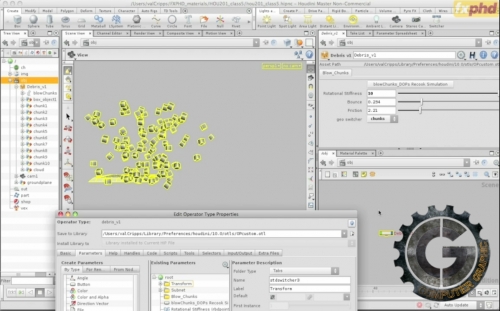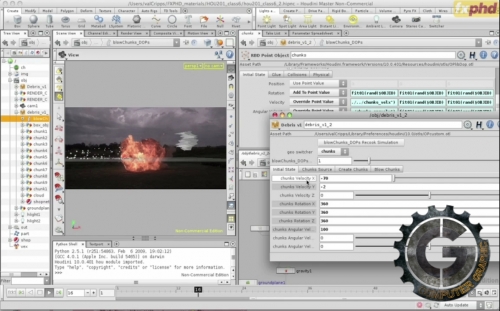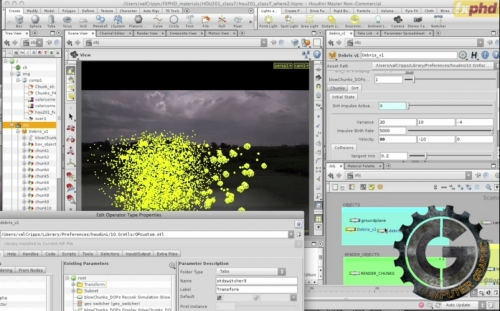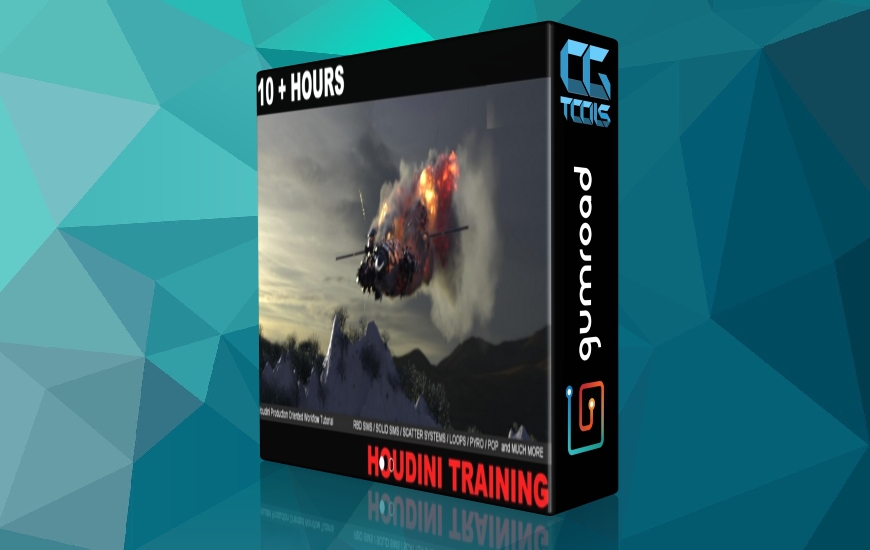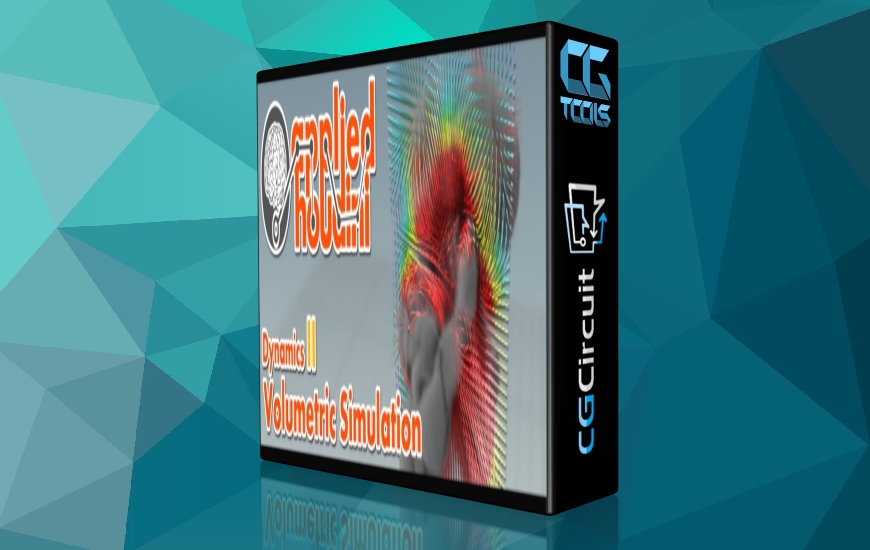Val Cripps and Lori Smith are teaching the course, two Houdini fx artists who have worked on their share of fx for film. Val will be presenting the lessons, and Lori will be working with Val behind the scenes to get the material together. The topic for HOUD201 is debris, a staple, bread and butter type of fx work that happens on many films and commercials, and that you will do at least once in your fx career. This could include pieces of glass kicked by a cg character's foot, for example in The Incredible Hulk, or bits of dirt crumbling down a roof from a character climbing, like some shots the prof's worked on in They Came From Upstairs/Aliens in the Attic, or many other situations where debris helps set the CG into the live action, or must help to tell the story. We'll start with a general introduction and overview to these types of effects and dynamics in Houdini, and then we'll complete a simple shot with debris flying into the scene, much like fx work that Lori did on Pirates of the Caribbean at Digital Domain. This will include traditional and procedural modeling techniques with instancing, techniques and tricks for DOPs (dynamic operators), POPs, (particle operators) and of course, some shading, rendering and compositing to get everything layered together.Cripps worked at Side Effects Software for 7 years before going into production in 2003. She has worked as a freelance fx and lighting artist at Sony Imageworks, CBS and Rhythm and Hues on films such as Superman Returns, Spiderman 3, and Mummy 3, among many others, working on effects such as swarms of flying locusts, flames, crowds, snow, dust, clouds and more. She received her Master of Fine Arts in Electronic Visualization from Mississippi State University in 1997.Smith has worked in CG for4 yearsat Digital Domain and 1 year at Rhythm and Hues.During this time sheworked on commercials and films such asAeon Flux, Flags ofOur Father,Pirates 3, Speed Racer, Mummy 3, Cirque du Freak and Land of the Lost as a technical director and fx artist. She received her Master of Science in Visualization Sciences from Texas AandM University in 2003.
course syllabus
Class 1: We very briefly touch on what's new in Houdini 10. Check out www.sidefx.com for complete information, and for the apprentice version of Houdini we'll be using. We discuss our topic, which is Debris in fx production. We then begin with an introduction to DOPs (dynamic operators), covering how to get started with a few simple examples, a look at the interface and a few key points to keep in mind.
Class 2: We continue our introduction and overview of DOPs. We cover the following topics: Creating and tweaking rotational movement in DOPs, Friction and Dynamic Friction, Collisions, and Interaction and Animated Objects.
Class 3: FX Shot for HOU201. We'll introduce the shot we'll be working on this term, and delineate the elements needed to create a shot similar to the pirates shot. We'll highlight some typical issues in production, including: naming conventions, director changes, digital assets for working on many shots, and more. We'll get into what's needed to get started on our shot, including creating the chunks that will be flying into the scene.
Class 4: Blowing chunks. We'll finish up any modeling for our chunks, get them moving and tweak things, and discuss topics such as moving chunks and interacting with ground (rotation and sliding), volumes and adjusting resolution for additional control and static vs animated geometry and more.
Class 5: We'll discuss workflow issues, such as: preroll, sims (creating, saving and importing sims), fps and playback, troubleshooting, and consolidating tools into digital assets for production.
Class 6: Setting up lights, shaders, and render passes for the Chunks.
Class 7: We continue to develop our digital asset as we work through the look of our shot, making exploding chunks, and fine tuning the control panel of our debris tool.
Class 8: We continue to add to our digital asset, using a magnet force to improve our explosion, adding a clumps element which includes using the stamp along with other POPs tips, and get ready to render.
Class 9: We set up all of our render objects and outputs and discuss related issues to rendering all of our elements.
Class 10: We finish up with a final look at the settings and add in some dust impact elements as a final bonus.
















